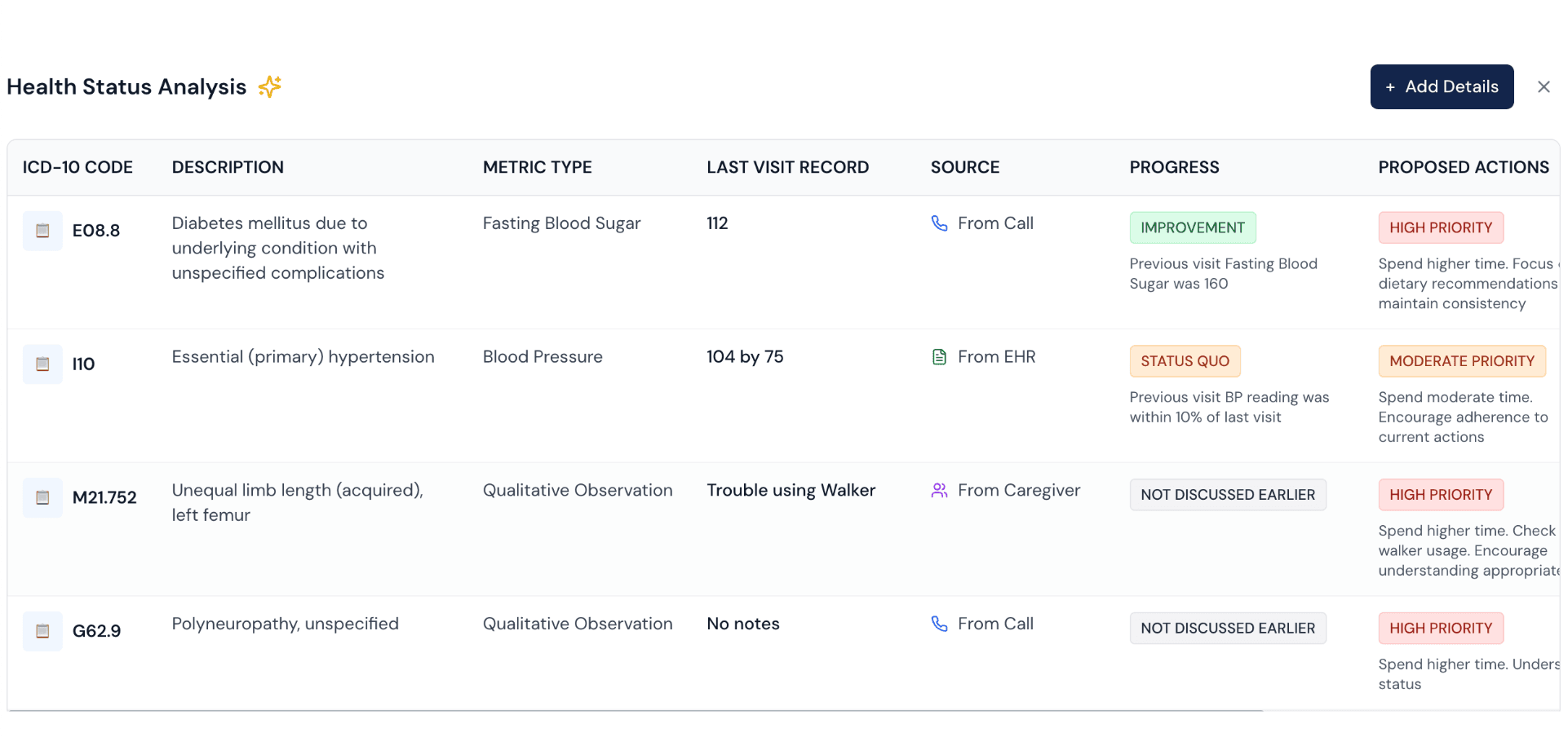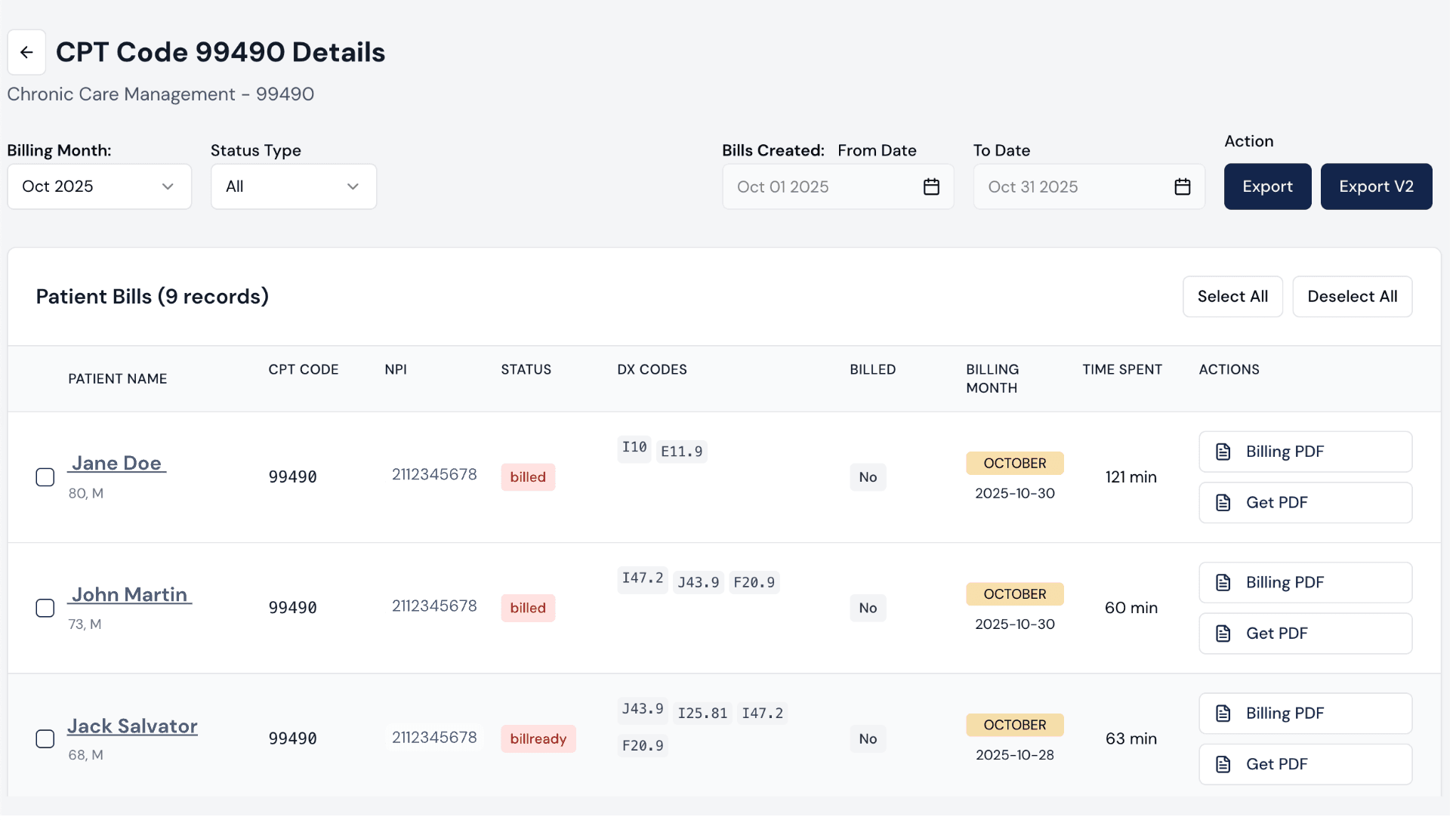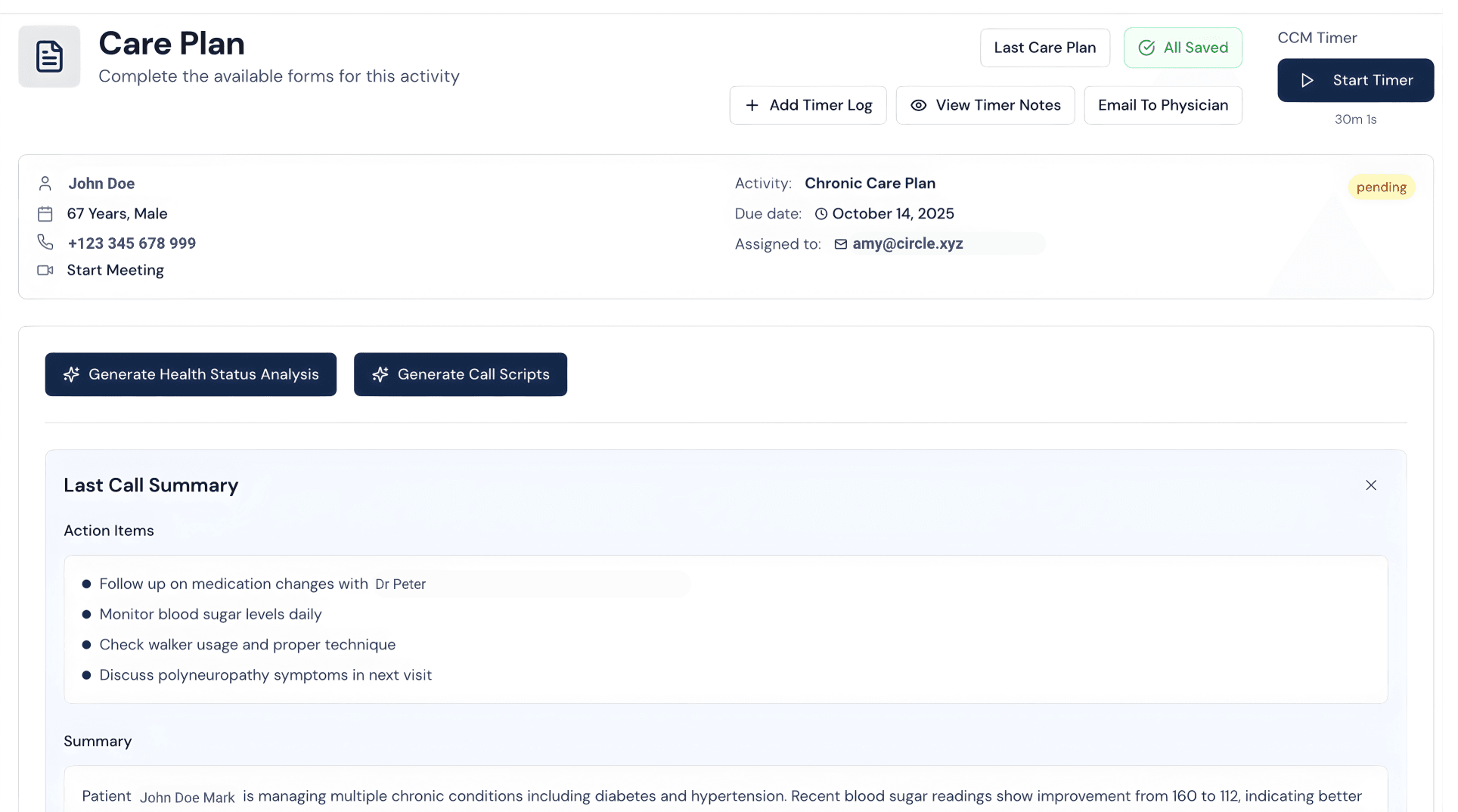Explore the key CMS 2026 updates to Remote Patient Monitoring (RPM) and Chronic Care Management (CCM) codes. Learn how these changes impact reimbursement, compliance, and care delivery for healthcare providers.
In July 2025, the Centers for Medicare & Medicaid Services (CMS) released the Calendar Year 2026 Physician Fee Schedule (PFS) Proposed Rule, introducing significant adjustments to Remote Physiologic Monitoring (RPM) and Chronic Care Management (CCM) codes. While these updates are still under review, they carry substantial implications for healthcare providers, RPM vendors, and care teams navigating remote patient care in 2026 and beyond.
The CMS proposal reflects a growing emphasis on longitudinal, preventive, and evidence-driven care—positioning remote monitoring as a cornerstone of modern healthcare delivery. However, understanding what's changing—and what's not—is crucial for providers to adapt their workflows, ensure compliance, and maximize reimbursement opportunities.
The Major Proposed RPM and CCM Code Changes
The 2026 CMS proposal introduces new time- and data-based codes aimed at making remote monitoring more flexible, especially for short-term or lower-frequency patient interactions, while keeping the existing foundational codes in place.
New Code for 2–15 Days of RPM Data Transmission
The proposed code 99454 allows providers to bill for 2–15 days of physiologic data transmission within a 30-day period. This represents a significant expansion from the current requirement of at least 16 days of data collection.
Previously, RPM reimbursement rigidly required ≥16 days of data collection, limiting coverage for shorter monitoring periods such as post-discharge care, medication titration, or transitional care scenarios. The new code opens doors for patients needing shorter-term monitoring while encouraging more timely interventions.
This flexibility is particularly valuable for use cases involving:
- Patients in post-acute care transitions
- Individuals starting new medications requiring close observation
- Patients ramping up engagement with RPM programs
- Those on GLP-1 therapy where weekly or biweekly measurements are clinically sufficient
- Parameters like body weight or pulse oximetry that require fewer data points to inform clinical decisions
New 10–19 Minute RPM Management Code
The proposed code 99457 (20 minutes) and 99458 (each additional 20 minutes) introduces billing for 10–19 minutes of clinical staff or physician time spent managing RPM data. This represents meaningful flexibility in how clinical engagement is reimbursed.
The proposed Relative Value Unit (RVU) of 0.31 represents roughly half the reimbursement of existing 20-minute management codes (99457 and 99458). While lower than the AMA's initial recommendation, its inclusion acknowledges the clinical value of shorter, focused patient interactions that fall short of the current 20-minute threshold.
This code enables reimbursement for meaningful, shorter-duration touchpoints such as responding to an alert, reviewing data trends, or adjusting medication—activities that are clinically valuable but don't warrant 20-minute billing intervals.
Existing Codes Retained (But Under Review)
Code 99454 – Device Supply and Data Transmission (≥16 days): CMS is retaining this code but has requested additional data to determine its ongoing value and reimbursement rate. The agency is proposing to move from practice expense (PE) RVU calculations to outpatient prospective payment system (OPPS) cost data, which may affect reimbursement rates.
Codes 99457 and 99458 – RPM Management (20+ minutes): Despite AMA recommendations to create shorter-duration equivalents, CMS proposes to retain the current 20-minute minimums for these core codes. This represents a point of divergence between CMS and AMA guidance.
How CMS and AMA Recommendations Compare
The American Medical Association and CMS have both proposed refinements to RPM and CCM billing, but their approaches differ in meaningful ways. Understanding these differences is essential for future planning.
Key Takeaway
While CMS is not fully adopting AMA recommendations, the inclusion of provisional codes like CPT 99454 (new) and CPT 99457/99458 (new) signals willingness to experiment with more flexible billing options. Providers should view these as early signals of a longer-term shift toward adaptable, data-informed reimbursement models.
The Broader Policy Direction: What These Changes Signal
Beyond the technical coding adjustments, the 2026 proposal reflects CMS's strategic direction: a shift from episodic, reactionary care toward longitudinal, preventive, and data-driven care delivery. These themes will shape how RPM and CCM evolve in both reimbursement and clinical practice.
RPM as Longitudinal Care—Not a Temporary Fix
CMS explicitly reaffirmed a critical principle: remote physiologic monitoring can continue as long as medical necessity exists. This represents an important clarification that RPM is no longer viewed as a temporary or "post-acute" service, but as a sustained tool for chronic condition management and prevention.
This designation legitimizes long-term RPM programs and validates approaches like HealthSnap's evidence showing that patients in RPM for more than 18 months experience 50% higher rates of hypertension control compared to those in the program for less than 3 months.
Practical Implication: Providers should build RPM workflows that emphasize continuity and sustained outcome tracking, rather than one-off data collection events.
Prevention and Lifestyle Health Take Center Stage
CMS's prevention framework increasingly centers on behavioral and lifestyle interventions—including physical activity, nutrition, and mental wellness. In the proposal, CMS highlighted physical activity as a critical health indicator that should be measured and reported with the same rigor as vital signs like heart rate or blood pressure.
This alignment with growing clinical evidence positions RPM as more than a monitoring tool—it becomes a catalyst for preventive intervention and behavior change. The emphasis on physical activity as a "vital sign" opens doors for integrating wearable data, step counts, and activity levels into standard RPM workflows.
Implication for Care Teams: Remote monitoring should evolve beyond traditional chronic conditions like hypertension or diabetes to include preventive indicators such as mobility, weight stability, step count, and functional capacity.
The Growing Emphasis on Real-World Evidence
A consistent message throughout CMS's proposal is the need for stronger outcome data. The agency is explicitly requesting more real-world evidence showing how RPM improves patient outcomes, reduces hospital utilization, and drives cost savings. This applies especially to code 99454, where CMS seeks data linking transmission frequency to measurable clinical improvement and cost reduction.
For Providers and Vendors: This means investment in data collection and outcomes documentation is no longer optional—it's essential. Organizations demonstrating clear clinical and economic value will be better positioned for future reimbursement changes.
What This Means for Your Organization

The proposed 2026 CMS updates present both opportunities and operational adjustments across the RPM ecosystem. While the intent is to expand flexibility and accessibility, implementation will require careful adaptation at multiple levels of care delivery.
Actions for Healthcare Providers
Providers need to reassess existing workflows to align with new code options and eligibility criteria. Consider these action items:
Review billing practices: Ensure your documentation systems can properly capture both ≥16-day and 2–15-day RPM scenarios. Audit current billing procedures to identify gaps or overcounting.
Update patient onboarding protocols: Identify patient populations who can benefit from shorter monitoring cycles—post-surgical patients, those starting new medications, acute follow-ups, or individuals transitioning from inpatient to outpatient care.
Implement precise time tracking: The new 10–19 minute management code requires accurate documentation of clinical engagement time. Systems must log staff time with sufficient granularity to support billing compliance.
Stay informed on final rules: The final rule is expected in late 2025. Monitor CMS updates and adjust workflows as needed before 2026 implementation.
Providers who prepare early will be better positioned to scale patient coverage and ensure smooth billing transitions when the final rule takes effect.
What RPM and CCM Vendors Should Do Now
Vendors play a crucial role in enabling compliance and scalability under the new framework. Strategic recommendations include:

Add dynamic tracking capabilities: Platforms should automatically log transmission days and total provider engagement time to align with both existing and new code structures, reducing manual documentation burden.
Support flexible monitoring durations: Enable RPM configurations for 2–15-day windows and ≥16-day programs without complex manual setup or workarounds.

Expand data analytics and outcome tracking: Integrate clinical outcome reporting to help providers demonstrate impact—a key CMS priority. Make it easy for organizations to export data showing measurable patient improvement.
Update reporting dashboards: Reflect both legacy and provisional code metrics so practices can pivot easily once final rules are adopted.

Vendors who make compliance effortless while connecting clinical outcomes to reimbursement will have a clear competitive advantage in the 2026 landscape.
Workflow Changes for Care Teams
Nurses, health coaches, and clinical support staff will experience the most immediate workflow changes:
- Leverage shorter monitoring windows: The 2–15-day option allows teams to intervene faster for at-risk patients without waiting for full 30-day cycles.
- Document shorter interactions: The 10–19 minute management code enables proper billing for meaningful patient touchpoints that previously went unreimbursed.
- Segment patients by monitoring intensity: Begin categorizing patients as short-term, chronic, or preventive to match the appropriate billing and care pathway.
- Integrate prevention more deeply: The emphasis on physical activity and lifestyle data calls for closer integration between RPM and health coaching, fitness tracking, and nutritional counseling.
The Opportunities Ahead
The 2026 proposal introduces meaningful innovation with important guardrails. Understanding both the upside and remaining friction points is crucial for long-term planning.
Expanded Access to Remote Monitoring
The addition of codes for 2–15 days of data transmission and 10–19 minutes of management means more patient populations—including those in transitional or preventive care—can now access reimbursable RPM programs. This democratizes remote monitoring and enables organizations to serve broader populations.
Validation of Longitudinal Care Models
CMS's clear statement that RPM can continue "as long as medical necessity exists" is an essential win for chronic care programs. This legitimizes ongoing, continuous patient engagement rather than episodic interventions.
Alignment with National Prevention Priorities
The proposed focus on lifestyle data (like physical activity) positions RPM as a proactive tool in national prevention strategies. This creates opportunities for new care pathways, expanded service offerings, and emerging reimbursement streams.
Better Integration Across Care Models
These proposals encourage synergy between RPM, CCM, and Remote Therapeutic Monitoring (RTM), allowing providers to blend clinical monitoring with behavioral health and therapy tracking more seamlessly.
Challenges That Remain
AMA and CMS Aren't Fully Aligned
While the AMA has formally approved updates to RPM treatment management codes—such as changing 99457 to cover 11–20 minutes and 99458 to reflect additional 10-minute increments—CMS has rejected these changes in the 2026 proposed rule.
Instead, CMS maintains the current ≥20-minute threshold for 99457 and 99458, and assigned a lower RVU (0.31) than AMA proposed for the new 10-19 minute code (99XX5). CMS explains this is due to insufficient survey data and a desire to maintain relativity between RPM and RTM codes. The agency will reassess once 2026 utilization data becomes available.
Ongoing Reimbursement Uncertainty
CMS is still evaluating how to price code 99454 using OPPS data instead of practice expense RVUs. Until finalized, providers may face fluctuating reimbursement rates, creating budget planning challenges.
Documentation and Compliance Complexity
Operating under dual pathways (new vs. legacy codes) during the transition year could create confusion in billing, tracking, and audit preparation. Organizations need robust systems to manage both approaches simultaneously.
The Evidence Imperative
CMS continues to request stronger, real-world evidence proving RPM's clinical and cost benefits. Practices must invest in data collection and outcomes reporting to maintain compliance and justify continued reimbursement in future rounds of rulemaking.
How to Prepare Now
The 2026 CMS proposed rule signals evolution rather than revolution—but early preparation can give healthcare organizations a strategic advantage heading into next year.

For Providers and Health Systems
- Audit your RPM workflows: Review how data is collected, documented, and billed. Ensure systems can handle both 2–15-day and ≥16-day billing structures.
- Train clinical and billing staff: Educate teams about the new 10–19-minute management code (99205) to avoid underbilling or compliance errors.
- Segment your patient population: Identify who qualifies for short-term versus chronic RPM programs to maximize coverage while maintaining compliance.
- Invest in outcome data collection: Focus on capturing patient progress metrics—blood pressure trends, glucose improvements, hospitalization reductions—to strengthen reporting and support future reimbursement changes.
- Participate in CMS feedback: Submit comments or data insights during the official comment period to influence the final 2026 rule.
For RPM Vendors and Technology Platforms
- Enhance data automation: Incorporate auto-tracking for monitoring duration, transmission days, and clinician engagement time.
- Enable multi-code flexibility: Build system logic to seamlessly handle both existing and provisional RPM codes for smooth billing transitions.
- Add clinical outcome reporting: Make it simple for providers to export data showing measurable patient improvement.
- Support compliance transparency: Implement audit-ready documentation and timestamp tracking to help practices stay protected during CMS reviews.
- Integrate preventive health modules: Add physical activity, nutrition, and wellness tracking capabilities aligned with CMS's prevention goals.
For Care Teams
- Adjust your engagement cadence: Use the flexibility of new codes to engage patients more frequently in shorter, high-value interactions.
- Strengthen interdepartmental communication: Coordinate between clinical staff, billing departments, and technology teams to ensure accurate reporting.
- Expand your monitoring definition: Include preventive and lifestyle metrics as part of regular RPM workflows to align with CMS's preventive health vision.
Looking Ahead: What Comes Next
The proposed 2026 CMS changes to RPM and CCM codes represent an important step toward a more flexible, inclusive, and preventive model of remote care. By introducing provisional codes for shorter transmission periods and management durations, CMS is acknowledging that meaningful patient engagement doesn't always require lengthy data collection windows or extended clinical interaction times.
However, the rule also highlights a growing expectation: remote monitoring must not only connect patients to care but also deliver measurable clinical and cost outcomes. This shift represents CMS's long-term vision of value-based, data-driven remote care delivery.
The organizations best positioned to thrive will be those that:
- Prepare now before the final rule is published
- Align documentation and billing systems with both existing and upcoming code structures
- Embrace preventive and longitudinal monitoring models reflecting CMS's healthcare vision
- Invest in outcome tracking and evidence generation
- Build flexibility into their technology and care delivery workflows
Remote care is no longer an experimental reimbursement category—it's becoming a core pillar of modern healthcare delivery. Those who adapt early will lead the way in defining what effective, data-driven, patient-centered remote care looks like in 2026 and beyond.
Key Takeaways
- CMS's 2026 proposal adds new flexibility through 2–15-day and 10–19-minute RPM codes
- Longitudinal care is officially endorsed, reaffirming RPM as a sustained clinical service
- Real-world evidence is now essential for justifying reimbursement and supporting future code expansion
- Vendors and care teams should prioritize automation, compliance, and preventive data integration
- Early preparation for workflow, billing, and documentation changes ensures smooth transition to final rules

